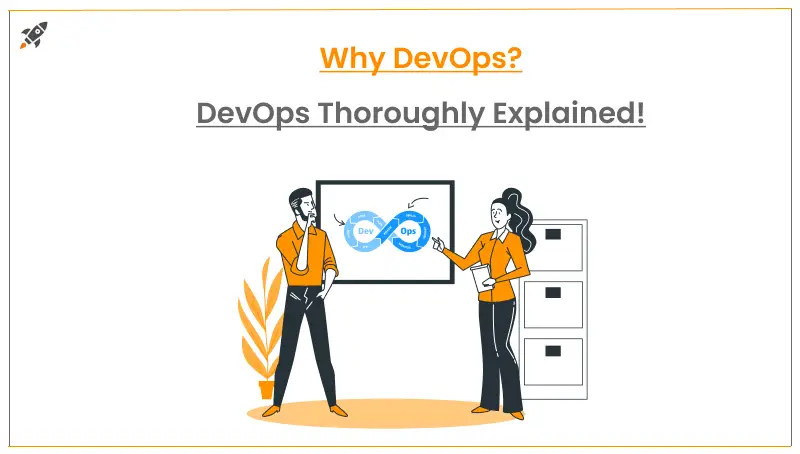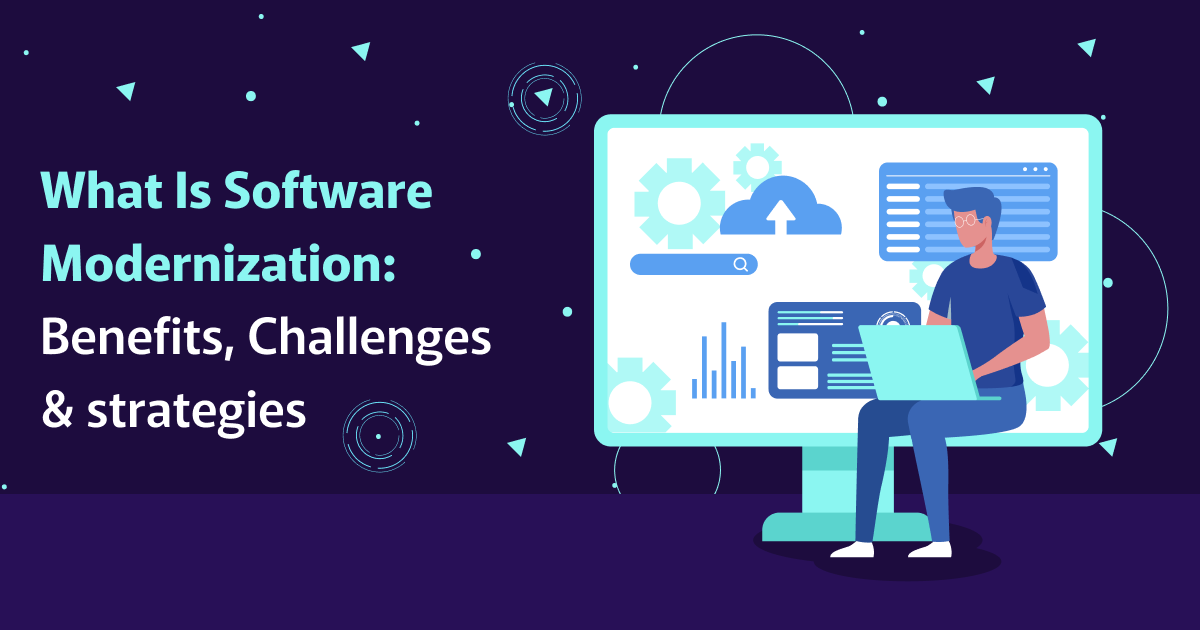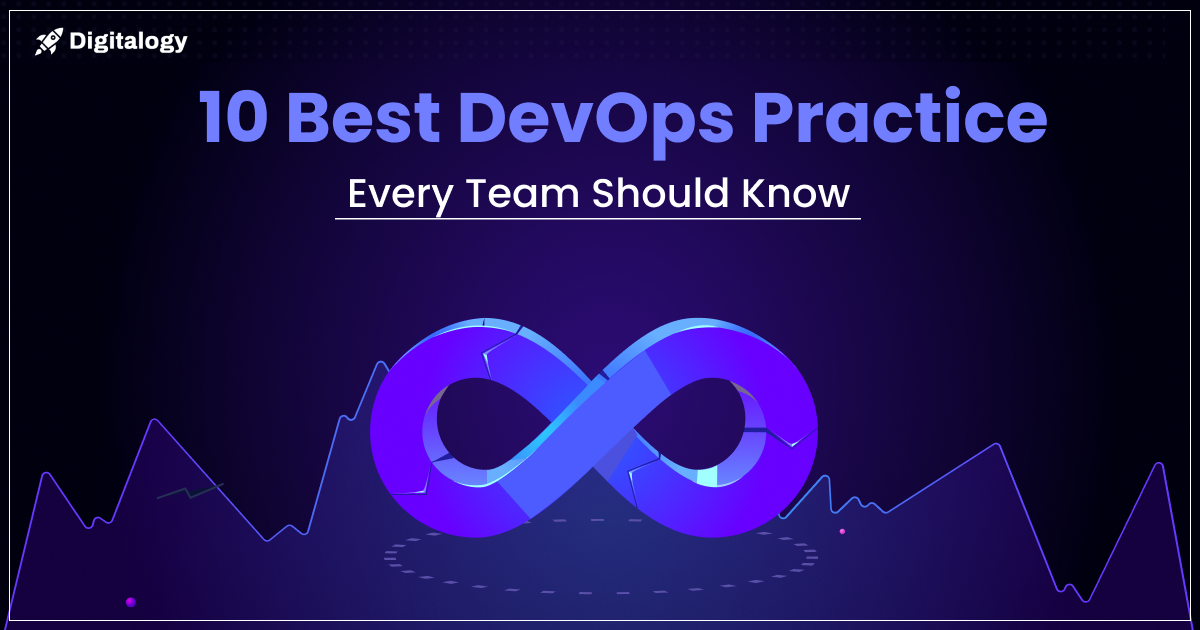DevOps is not a technology or a development, but a viewpoint that touches on the various aspects of software development including feedback, features, and updates. This article is going to delve deeper into what is DevOps, how does it work, why devops, DevOps Vs Agile, and what are the benefits of DevOps.
What is DevOps?
DevOps is a combination of two words “Development” and “Operations” that refers to a cultural aspect of an IT organization. In 2007 and 2008, the IT operations departments and software developers realized that there was a huge gap between the two departments that actually were interrelated.
The widening gap between the two had repercussions like negative releases, surprising outcomes, and unsatisfied customers. Consecutively, it was decided to collaborate the two departments. Hence, around 2007, the DevOps Movement started gaining momentum to enhance the efficiency of the work.
The term “DevOps” was coined by Patrick Debois, an IT consultant in 2009 known for using agile techniques to bridge the gap between project management and operations.
How Does It work?
DevOps is a methodology that seeks to enhance the software development lifecycle. Organizations use a blend of cultural inputs and technological advancement in pursuing the software goal. In an ideal situation, the IT team creates the software that fulfills their requirements and runs on its first attempt.
The two integrated teams collaborate to automate the processes that earlier were done manually and required more time. DevOps use a technology stack that helps them tackle software management systems quickly and reliably.
DevOps tools help teams to operate and implement different tasks in less time and this is also one of the benefits of DevOps. Teams constantly monitor the changes and review policies to ensure smooth functioning.
The following section is going to talk about the six stages of the DevOps Lifecycle.
DevOps Lifecycle And Tools
DevOps tools in a given lifecycle include planning, building, continuous integration, delivery, operation, monitoring and alert, and regular feedback. For understanding purposes, these are the six phases that software developers deal with.
However, due to the dynamics of the IT sector, the phases are bound to change, and new integrations are introduced in each quarter. Let us have a closer look at the 6 phases.
1. Plan
This stage-manages the complex aspects of software development including sprint planning, collaborations, and issue monitoring. Softwares like confluence and slack allow users to break a larger chunk of work into smaller units for smooth and fast working.
It allows developers to review feedback and make necessary changes. The examples of tools for this stage are Slack, Confluence, and Jira software.
2. Build
This phase involves production, infrastructure, and collaborative coding and requires re-building and positioning of faster software development. This stage is not about recovery or repair; hence it is more about enhancement and consistency.
This means that developers can bring variations in the environment with familiar technical inputs and configurations. The code can be regularly reviewed and adopted into CI (continuous integration). Popular examples are Terraform, Puppet, and Docker.
3. Continuous Integration
Continuous integration means constant monitoring and testing of code at a specific location several times a day. This process helps developers detect problems early in the process and fix them consequently. This is followed by adding new features to the software, so it is relevant to the recent technology.
Developers look for tools that help them integrate their branches into the main hole. This phase allows developers to gather feedback consistently and paves way for testing and deploying dashboards. The examples for this stage are Amazon Web Services, Bitbucket, and Jenkins.
4. Operate
Deploying dashboards is a part of operations that includes changing, testing, and deploying information in a consolidated format in one place. A dashboard must have all tools, pull requests, and deployment notifications in a single place. Examples of this are slack, Splunk, and New Relic.
5. Monitor and Alert

Monitoring is a crucial phase of the DevOps lifecycle as it entails changes and issue tracking. Majorly there are two types of monitoring-; server monitoring and application performance monitoring.
The key characteristic of a successful DevOps team is consistent tracking and making changes accordingly. Another important input in this phase is alerts. Developers must look for tools that allow them to receive timely alerts to the concerned groups. Jira Software is a perfect example of this phase.
6. Feedback
Regular feedback is imperative to any technological development and tools to collect feedback are of utmost importance. As part of DevOps culture, all members of the software development team must have access to users’ comments or feedback, so it helps them during all other phases, right from planning to monitoring and alerts.
A suggestion for software developers is that they must look for applications that allow them to integrate chat tools with online survey platforms for quicker feedbacks. For real-time feedback websites, like Twitter and Facebook can be integrated with chat.
To enhance ones’ social media presence, investing in social media management platforms is a must, and feedback coming from that would help brands in the market. Get Feedback and Pendo are some of the examples.
Why DevOps Matter?
This segment is extremely crucial as to why DevOps. Software is an integral part of the functioning of companies. Using the software, companies come up with interactive user interfaces and creative dashboards to help consumers with online services.
Software is used to make constant upgrades to operational aspects along with design, logistics, and communications. One of the advantages of DevOps, in this case, is about avoiding any barrier between development and operations.
The two departments work beyond their stated responsibilities and ensure the optimum quality of services are offered to the customers. Adopting the DevOps model is always an advantage for the companies as the development and operational infrastructure is seen as part of the responsibilities.
What Are DevOps Methodologies?
DevOps can be viewed as a successor of agile software development. The purpose of DevOps is to match the dynamics of the increased velocity of software developments using agile methods. Agile development is a broader term used for development methodologies that are now part of DevOps.
- Scrum: Scrum is a network used by people addressing issues related to the delivery of high-value products.
- Kanban: It is a method that ensures smooth management in creating and delivering the products consistently. In this manner, teams are not overburdened and work effectively together.
- Scaled Agile framework: Scaled Agile framework is a set of guidelines that offers assistance on issues encountered during scaling beyond a single team.
- Lean development: Lean is a combination of manufacturing principles and practices to alleviate software development experience that supports agile organizations.
- Extreme Programming: It is a software development methodology that aims to improve the software quality and interaction as per the customers’ requirements. XP believes in constant releases in short development cycles that enhance productivity and brings in checkpoints according to the requirements of new customers.
DevOps, Agile, And SRE Explained
1. DevOps: DevOps is an organizational culture in which companies interact and collaborate using different teams. Although, DevOps is essentially an organizational culture but includes tools ensuring the smooth functioning of the company. Thus, DevOps begins with culture and drive towards tooling.
2. Agile and Lean: Like DevOps, Agile focuses on culture but it goes beyond it. Agile and Lean monitor the iteration rate with short development lifecycles and quicker feedback. They may read differently but how Agile and DevOps to interrelate is going to be discussed in the next segment.
3. SRE: SRE begins with tooling and delves into a culture. SRE companies automate their engineering functions and depend on software developers to carry out highly scalable operations.
What Are The Differences And Similarities Between Agile And DevOps?
Differences
- One of the points in DevOps Vs Agile is that Agile is a software development methodology that is concerned with the creation and launch of the software. However, DevOps uses pre-installed software that is not only deployed but reliable. Thus, DevOps does not play any role in software development.
- Agile and DevOps, are different from each other when it comes to teamwork. The agile methodology allows each member to be skilled in every aspect of application development. Thus, developers using the Agile method are required to be trained in all functions and ensure optimum quality and efficiency without bothering the project. On the other hand, developers following DevOps methodology require two separate teams, that is, development and operations for the project. DevOps requires close synchronization among the two departments for desired outcomes.
Similarities
- How do Agile and DevOps interrelate is that both have adopted lean philosophies and it has been noticed especially during communication.
- Agile and DevOps both work towards enhancing business productivity and rely on teamwork and collaboration and share updates regarding the progress and that is how do Agile and DevOps interrelate.
How To Adopt DevOps Model?
Adopting the DevOps model requires six major steps ensuring the smooth functioning of the organization. The six steps include embracing the DevOps mindset, making the most of metrics, addressing the needs, adopting iterations, ensuring quality assurance in the early phase and approach to automation.
1. Embracing a DevOps Mindset
To begin with, developers are required to identify the touchpoints that are needed to improve software development. For a better user experience, developers are required to identify specific areas that are inefficient and may hamper the development cycle.
Developers have to dig deeper into the deployment process to ensure there are no constraints because if problems are not identified, it will be difficult for developers to improve the systems.
2. Making the Most of Metrics
The second step in the adoption process is the selection of appropriate metrics to record and monitor the progress of the development. The parameters of metrics include production failure rate, mean time to recover, average lead time, mean time to production, and deployment frequency. However, the parameters are bound to differ according to the developers’ working styles.
3. Addressing the Needs and Requirements
Every organization has its own needs that are connected to its business and culture. DevOps is a methodology that seeks to accelerate the development and deployment process of the software lifecycle.
However, the needs and requirements should be such that consumers are not bothered by them. For instance, if the consumers are not fine with multiple upgrades for your products, developers must come up with newer strategies for enhancing the system.
4. Adopting Iterations
Iterations are an important aspect to any business, more so to the lifecycle of software development because it is going to impact businesses that rely on the software. Iterations include ensuring that all needs and requirements are met, and progress is being achieved against the metrics.
Developers must be mindful that all aspects are ensured before jumping to the next part and very important that the members involved should learn and take back to their teams.
5. Quality Assurance in the Early Phase
Running quality assurance tests beforehand is critical to the development cycle. Quality assurance tests allow developers to monitor and upgrade software regularly. The tests include static code analysis and unit tests. Developers can run automated tests also, however; all tests are not automated and may require developers’ input.
6. Approach to Automation
Automation is the final segment in this guide of adopting DevOps. Everything should be defined and written in code for accelerating the automation process. This includes infrastructure, configuration, build, test and process. Developers must establish a standardized way of automation so that everyone has a common ground for reference and communication.
Remember the quality of automation is as crucial as the quality of the application. Agile methods are used to automate the processes in DevOps systems. This is what is seen in DevOps vs Agile section also.
What Are The Best Practices To Implement DevOps?
- DevOps require a level of collaboration and mindset which is reflected in the organizational culture also. The approach while implementing DevOps methodology should be such that it replicates customers’ points of view.
- Developers should use an agile management approach as it allows them to gather customer feedback and ensures smooth upgrades to the product. Two practices that are necessary for the efficient implementation of DevOps are continuous integration and continuous delivery.
- Continuous integration allows developers to make regular changes to the code at a specific centralized location. Continuous delivery gets the code from integration to production.
- Monitoring unit cost is a useful tip for building software as it allows developers to create and manage cost-effective software from the start.
- Switching to microservices is another important step for the implementation of the DevOps approach as it collides with the idea of breaking large chunks of projects into small pieces.
What Are the Benefits And Challenges?
Benefits:-
There are many benefits of DevOps method including speed, rapid delivery, transparency, reliability, security and problem-solving feature. This section would help our readers to know why to choose DevOps.
1. Speed
The DevOps model offers high velocity that enables customers to work faster and update according to the changing markets. This is one of the advantages of DevOps. For instance, continuous integration and delivery enable developers to monitor the software and make changes according to the circumstances.
2. Rapid Delivery
DevOps help developers to release software quickly so that it can be improved further. Quicker releases mean increased chances of bugs being found and fixed. Continuous integration and continuous delivery let the developers automate software deployment process.
3. Transparency
The elimination of gaps between the operations department and software developers has allowed companies for a free flow of communication and enhanced their productivity and efficiency. With open communications, team members are aware of each other capabilities and strive to achieve perfection in their specialized fields.
4. Reliability
Quality assurance tests are done to ensure that the software is reliable and provides optimum experience to the end-users. For each change to be operational, practices such as continuous integration and continuous delivery are implemented.
5. Security
Another benefit of the DevOps model is that it does not hamper the security of the device while working with automated policies and configuration management techniques.
6. Problem Solving Technique
One of the major benefits of the DevOps model is that it offers problem-solving techniques in real-time. This has been helpful for companies with their software management systems.
Challenges:-
- Changes in the IT department and organizational structure, like new roles and responsibilities pose one of the greatest DevOps challenges.
- Platforms and tools used for training and support are costly.
- Automation processes that are not necessary and unsafe.
- Software deployment that is done with a fail-fast approach and is risky.
- Compliance with regulations, especially during role separation is another DevOps challenge that time and again has proven difficult for companies to tackle.
- Using DevOps requires software engineering expertise along with sufficient knowledge of continuous integration, testing tools, delivery process, and DevOps management.
Which Companies Are Adopting DevOps?
Companies like Etsy, Facebook, Amazon, Sony Pictures, and Netflix are known for adopting the DevOps methodology. Financial service companies like Barclays Bank and USG have adopted DevOps. As per a survey conducted by New Relic, 74% of companies have already employed DevOps in one way or another.
Small and medium-sized businesses have implemented and reaped the advantages of DevOps methodology by gaining profitability. Governments have embraced DevOps as it enables them to constantly monitor and upload changes or upgraded versions accordingly.
Wrapping Up
DevOps is here for quite some time now and by looking at its immense popularity it is going to stay here for a long time. One of the reasons is its quicker feedback which ultimately leads to improved user experience. We hope you have figured out what is DevOps, how do Agile and DevOps interrelate, the benefits of DevOps, why DevOps and how is it going to be useful for your business.







